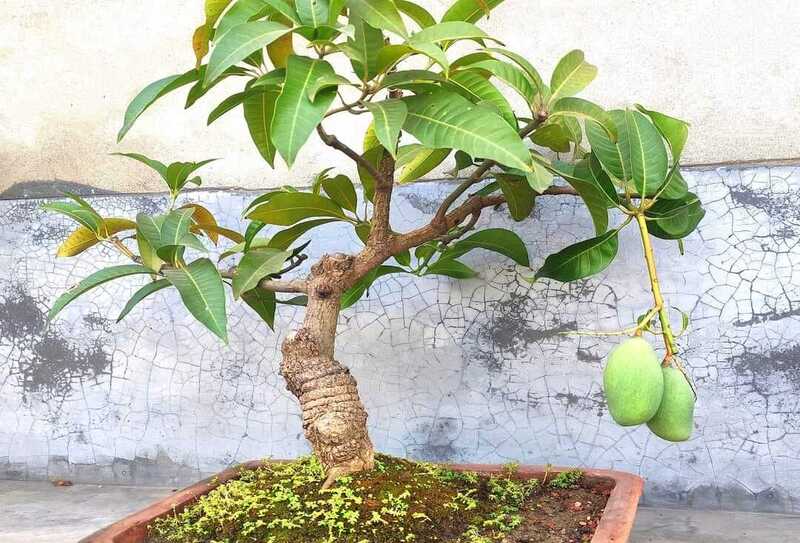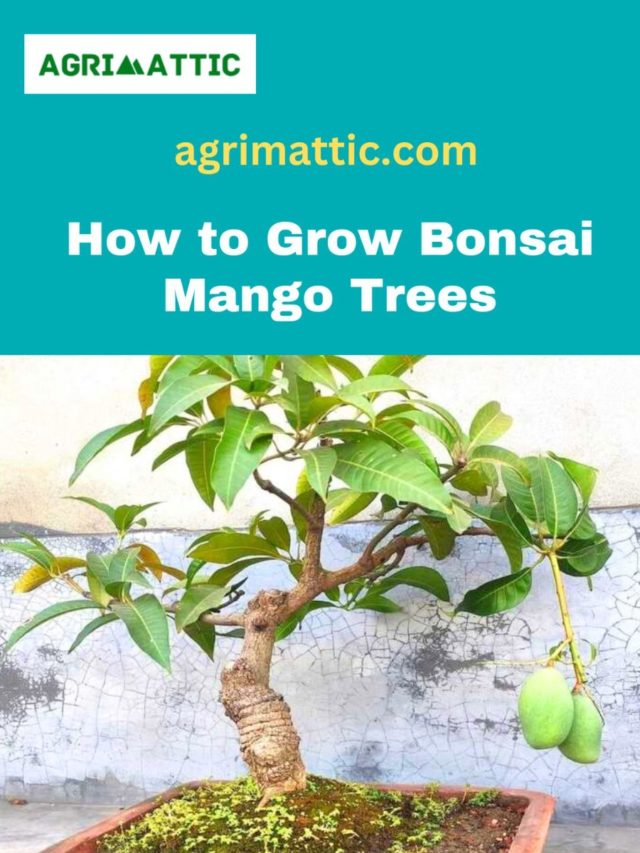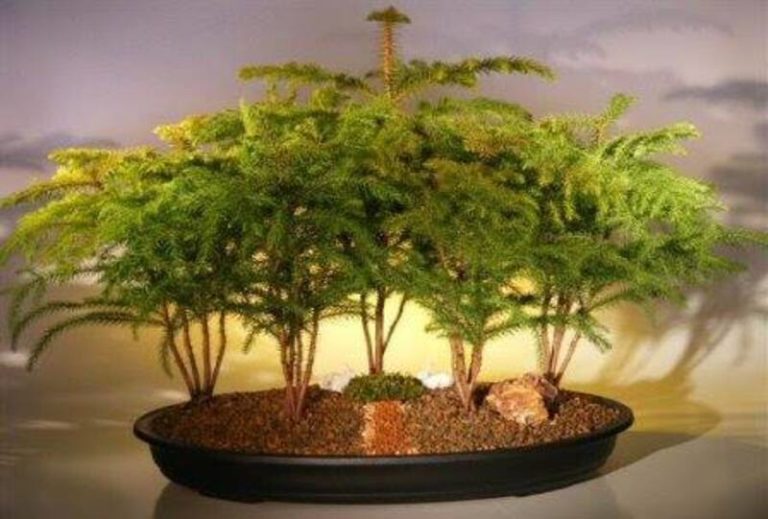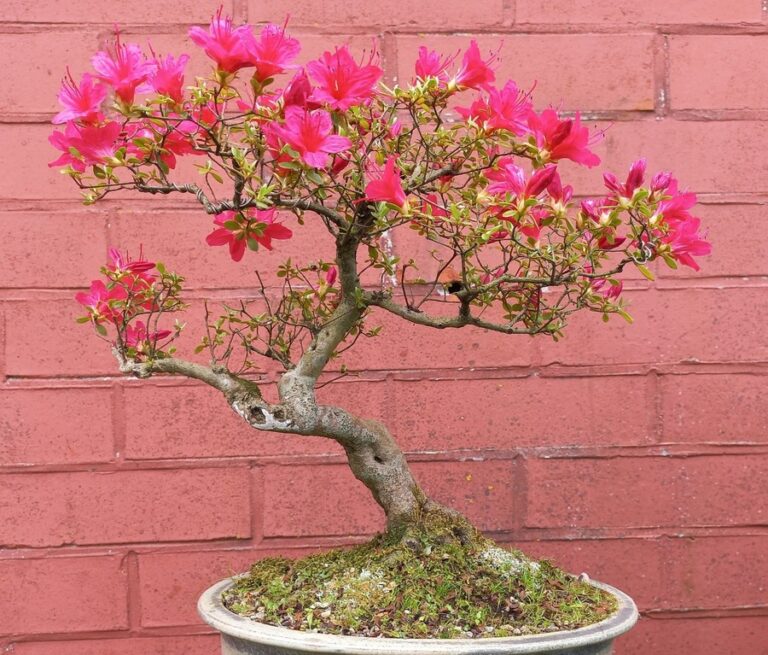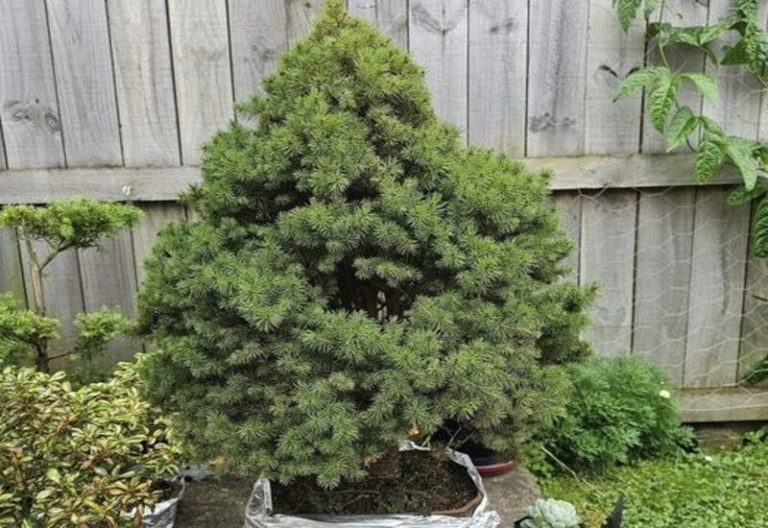Bonsai Mango Tree : A Miniature Delight for Your Home
For generations, plant fans have been attracted by bonsai, the ancient art of producing small trees. Mango trees, one of the numerous tree species suited for bonsai maintenance, are becoming increasingly popular owing to their unique and exotic appearance. In this post, we will look at the advantages of growing bonsai mango trees, how to pick the proper tree, basic care and maintenance, styling and design, seasonal care, and troubleshooting suggestions, all in easy-to-understand language.
What is Bonsai Mango Tree
Bonsai mango tree are small mango tree that are grown using the ancient technique of bonsai. They are meticulously carved and fashioned to resemble mature mango tree in nature. They are cultivated in tiny pots and may be kept in small settings both indoors and outdoors. With their rich foliage, complex branching patterns, and ability to produce blooms and fruit, bonsai mango tree are a distinctive and exotic addition to any bonsai collection.
Types of Bonsai Mango Tree
There are several species of mango tree that are commonly used for bonsai cultivation. Some popular types of bonsai mango tree include:
Mangifera indica: This is the most commonly used species for bonsai mango tree. It has a compact size, with small leaves and branches that are ideal for shaping and styling. It produces fragrant flowers and small fruits, adding to its aesthetic appeal.
Mangifera persiciformis: This type of mango, native to Southeast Asia and famed for its beautiful peach-colored blooms, goes by several common names. It’s densely leafed and suitable to a wide range of bonsai techniques.
Mangifera odorata: Also known as the Kuweni Mango, this species is native to Indonesia and has distinctively twisted and contorted branches, making it a favorite among bonsai enthusiasts who prefer more unique and artistic styles.
Mangifera pajang: This species, also known as Borneo Mango or untamed Mango, is indigenous to Borneo and has elongated leaves and slender branches that are suitable for constructing bonsai trees with a more natural and untamed appearance.
Mangifera foetida: This species, also known as Horse Mango or Horse Mango Tree, has enormous leaves and distinctively rough bark, which can produce an intriguing texture in a bonsai. It is native to Southeast Asia and is known for its robust and substantial trunk.
These are just a few examples of the numerous sorts of bonsai mango trees that may be grown and groomed to produce one-of-a-kind and visually pleasing bonsai specimens. For effective bonsai production, it is important to research and pick the proper species that best meets your desired style, environment, and maintenance requirements.
Bonsai Mango Tree and Its Symbolism
Bonsai mango tree are beautiful, but they also have values in different cultures. Here are some of the things that bonsai mango tree represent:
- Prosperity and Abundance: People often see mango tree as signs of wealth, plenty, and good luck. In many countries, the mango fruit is a sign of wealth and success, and a bonsai mango tree is thought to bring its owner good luck and energy.
- Patience and Perseverance: It takes time and careful care to form and care for a bonsai tree, which takes patience and persistence. Bonsai mango tree show how important it is to be patient, persistent, and determined to get what you want.
- Balance and Harmony: People often think of bonsai plants, like mango tree, when they think of balance and unity in nature. In a bonsai design, the way the tree’s leaves, branches, and trunk are balanced shows how nature is in unity and how everything is linked. It also shows how much respect the bonsai artist has for the tree’s natural shape.
- Meditation and Mindfulness: Bonsai cultivation necessitates meticulous attention to detail as well as a strong bond with the tree. Working with bonsai tree is meditative and attentive for many bonsai practitioners, providing a sense of serenity, focus, and awareness. Bonsai mango tree may represent mindfulness practice and the significance of being present in the moment.
- Art and Beauty: Mango trees, like bonsai trees, are frequently regarded as living pieces of art. They are meticulously molded and fashioned to produce aesthetically spectacular and one-of-a-kind sculptures. Mango bonsai tree represent artistic expression, creativity, and respect for natural beauty.
Overall, bonsai mango tree represent wealth, patience, balance, meditation, and artistic expression. They are not only a beautiful addition to any house or garden, but they also have deeper implications that many bonsai aficionados and collectors understand.

Characteristics of Bonsai Mango Tree
Bonsai mango tree, like other bonsai plants, have traits that distinguish them and make them suited for the art of bonsai. The following are some important qualities of bonsai mango tree:
- Small Size: Through constant trimming and root care, bonsai mango tree are purposefully maintained tiny in size. This allows them to be cultivated in small containers like pots or trays, making them appropriate for indoor or outdoor growth in small settings.
- Compact Foliage: When compared to full-sized mango tree, bonsai mango plants often have smaller leaves. This is accomplished by the use of selective pruning and defoliation procedures to create a more proportional look in relation to the tree’s smaller size.
- Artistic Trunk and Branches: Bonsai mango trees’ trunks and branches are frequently sculpted and groomed to create a visually beautiful and aesthetically acceptable form. Wiring, carving, and bending techniques are utilized to produce intriguing and creative designs, with an emphasis on achieving a harmonious balance between the many branches.
- Limited Height: The height of bonsai mango tree is often maintained modest, ranging from a few inches to a few feet, depending on the style and age of the tree. This makes them perfect for indoor exhibition on tabletops, shelves, or bonsai stands, as well as for easy care.
- Naturalistic Appearance: Despite their small size and creative sculpting, bonsai mango tree are meant to mimic the natural form of a mature mango tree. They are designed to seem like a miniature replica of a full-sized mango tree, complete with a realistic portrayal of the trunk, branches, and foliage.
- Adaptability: Like other bonsai plants, bonsai mango tree are accustomed to surviving in small pots and may grow in a range of situations, including indoor and outdoor settings. To guarantee their health and lifespan, they must be watered, fertilized, pruned, and protected from adverse weather conditions.
- Seasonal Changes: Because bonsai mango tree are living trees, they experience seasonal changes much like their larger counterparts. They may have flowers and fruit, and their leaves may change color as the seasons change, adding to their dynamic and ever-changing character.
These are some of the primary qualities that distinguish bonsai mango tree and make them desirable for bonsai gardening. In the realm of bonsai, their small size, compact foliage, beautiful trunk and branches, realistic look, flexibility, and seasonal variations make them unique and engaging as living pieces of art.
How to Grow Bonsai Mango Tree
Growing bonsai mango trees requires careful attention to several key aspects of bonsai cultivation. Here are the general steps to grow a bonsai mango tree:
- Choose the right mango tree species: There are several mango tree species, and not all of them are suited for bonsai gardening. Look for species with tiny leaves, compact growth patterns, and good branching features, all of which are useful in bonsai. Mangifera indica (common mango), Mangifera minor (minor mango), and Mangifera odorata (horse mango) are all appropriate species for bonsai mango plants.
- Select a young mango tree: Begin with a young mango tree, ideally one that is 1-3 years old and has a straight, robust trunk with a decent taper. Avoid trees with serious flaws or illnesses, as they might have an impact on the tree’s health and overall appearance as a bonsai.
- Prune and shape the tree: Pruning is an essential part of bonsai cultivation. Trim the mango tree’s branches, leaves, and roots with sharp pruning scissors to get the desired form and size. Regularly prune back new growth to keep the bonsai’s compact size and form.
- Repot the tree: Repotted bonsai mango tree are required on a regular basis to freshen the soil, prune the roots, and encourage healthy development. Repot the tree every 2-3 years or as needed, using a bonsai soil mix that drains well. To keep the tree modest, prune back roughly a third of the root mass after repotting.
- Provide proper lighting: To grow, bonsai mango tree require enough of sunshine. Place the tree in a bright spot that receives at least 6-8 hours of direct sunshine every day. Indoors, utilize artificial grow lights to offer enough light intensity and duration.
- Water carefully: Regularly water the mango bonsai, keeping the soil evenly saturated but not soaked. This can cause root rot, so avoid letting the tree remain in stagnant water. Adjust the frequency of irrigation based on the tree’s requirements, which may vary based on temperature, humidity, and the season.
- Fertilize appropriately: Mango bonsai trees require regular fertilization to provide growth-promoting nutrients. Utilize a balanced, water-soluble fertilizer formulated specifically for bonsai, and administer it as directed by the manufacturer. Adjust the frequency and intensity of fertilization dependent on the tree’s growth and health.
- Protect from extreme weather: Extreme weather conditions, such as frost, excessive heat, and strong winds, can harm bonsai mango tree. Protect the tree from these conditions by relocating it indoors, providing shade on sweltering summer days, and taking frost precautions in the winter.
- Prune and wire for shaping: Utilize techniques of pruning and cabling to shape and design the bonsai mango tree. Remove undesirable growth and use wire to shape the trunk and branches into the desired shape. Wire should not be used to harm the tree or restrict its growth.
- Regular maintenance: Mango bonsai tree require ongoing care, including regular pruning, irrigation, fertilization, and pest/disease management. Regularly monitor the tree’s health and resolve any issues immediately to ensure its survival.
The cultivation of a bonsai mango tree requires perseverance, skill, and commitment. To accomplish the desired aesthetic and form, it is a continuous process of shaping and maintaining the tree. A bonsai mango tree can be an attractive and rewarding addition to your collection of bonsai trees with the appropriate care and attention.
Benefit of Bonsai Mango Tree
Beyond their aesthetic appeal, bonsai mango tree offer a number of additional benefits. Here are some advantages of cultivating bonsai mango trees:
- Stress relief: Mango bonsai care can be a relaxing and meditative activity that reduces tension and anxiety. Pruning, contouring, and caring for a tree can provide a sense of relaxation and mindfulness, thereby enhancing mental health.
- Connection with nature: With a bonsai mango tree, you can bring the beauty and peace of nature into your home or outside. Even in cities, they give you a sense of being connected to nature and can help you appreciate the beauty of nature more.
- Artistic expression: Bonsai is frequently regarded as an art form, and planting a bonsai mango tree allows for aesthetic expression. By shaping and designing the tree according to your creative vision, you may create unique and visually appealing bonsai designs.
- Education and learning: Bonsai mango tree cultivation may be instructive since it calls for familiarity with the tree’s development habits, anatomy, and horticultural techniques. You may learn more about trees and plants, improve your horticultural abilities, and learn about the fundamentals of landscape design.
- Conservation and preservation: Mango tree are one type of tree that can be saved and kept alive with the help of bonsai. By growing bonsai mango trees, you can help save rare or threatened mango tree species and add to efforts to protect them.
- Unique home décor: Bonsai mango tree may be used as one-of-a-kind and engaging home décor elements, bringing natural beauty and elegance to your living area. They may be placed as focal pieces in your house or business, becoming a source of conversation and appreciation.
- Personal satisfaction: Growing and nurturing a bonsai mango tree can be a fulfilling and rewarding experience. Watching the tree thrive and evolve over time can provide a sense of accomplishment and satisfaction, as you witness the results of your care and efforts.
In addition to their aesthetic appeal, bonsai mango tree provide a number of additional benefits, including tension relief, a connection to nature, artistic expression, education, environmental awareness, a distinctive home décor, and personal gratification. It is a unique and rewarding pastime that enables you to cultivate a living work of art while reaping the numerous benefits it brings to your life.
Styling and Design for Bonsai Mango Tree
Styling and design are crucial aspects of creating a visually appealing and aesthetically pleasing bonsai mango tree. Here are some key tips for styling and designing your bonsai mango tree:
- Choose the right style: Bonsai trees can be designed in a number of traditional and contemporary ways, including formal upright (Chokkan), slanting (Shakan), informal upright (Moyogi), cascade (Kengai), and windy (Fukinagashi). Choose a design that complements the natural characteristics of the mango tree and accords with your creative vision.
- Consider tree’s age and size: The aesthetics and design will be impacted by the mango tree’s age and size. Younger trees are more malleable and easier to shape, whereas elder trees may have established branches that are more difficult to reshape. Consider the scale of the tree and select a container that provides proportion and equilibrium to the design as a whole.
- Emphasize trunk and branches: A bonsai tree’s trunk and branches are its focal elements. When styling and designing your bonsai mango tree, pay close attention to the structure and orientation of the trunk and branches. Use wiring and pruning techniques to shape and position the branches to create a design that is balanced and harmonious.
- Create visual interest: Incorporate elements of visual interest into your bonsai mango tree design. This can include variations in trunk thickness, branch angles, foliage density, and asymmetrical positioning of branches. This will create a dynamic and visually appealing composition.
- Consider negative space: Negative space, or “ma” in Japanese aesthetics, is an essential component of bonsai design. It refers to the vacant or open spaces between the trunk, branches, and foliage. Utilizing negative space effectively can enhance the aesthetic allure of a bonsai tree and produce a sense of equilibrium and harmony.
- Follow natural growth patterns: The art of constructing a small version of a mature tree is known as bonsai. While styling and designing your bonsai, it is critical to adhere to the natural growth patterns of the mango tree species you are working with. Consider the mango tree species’ growth direction, leaf size, and branch structure, and strive to build a design that mimics its natural shape.
- Patience and experimentation: Patience, experimentation, and continual upkeep are required when styling and constructing a bonsai mango tree. To obtain the desired design, it may take several years of meticulous pruning, wiring, and sculpting. Allow the tree to develop and evolve over time, and be open to experiment and make alterations along the way.
Styling and design are critical aspects of creating a visually appealing bonsai mango tree. Consider the tree’s age and size, emphasize the trunk and branches, create visual interest, incorporate negative space, follow natural growth patterns, and be patient and experimental in your approach. With careful attention to these design principles, you can create a beautiful and captivating bonsai mango tree that is a true work of art.
How to Care and Maintain a Bonsai Mango Tree
Caring for and maintaining a bonsai mango tree requires regular attention and proper techniques to ensure its health and beauty. Here are some essential tips for caring and maintaining your bonsai mango tree:
- Watering: Mango trees need to be watered on a regular basis, but they should not be overwatered or allowed to dry up. Check the soil’s moisture level on a regular basis by putting a finger approximately an inch deep into the soil. It’s time to water if it seems dry at that depth. Water thoroughly until the bottom of the container is dry, and avoid allowing the tree to stay in standing water to prevent root rot.
- Fertilizing: During the growth season, which lasts from spring to autumn, bonsai mango tree benefit from frequent fertilizing. Use a balanced, water-soluble fertilizer designed particularly for bonsai or fruit plants. Follow the manufacturer’s recommendations for dosage and frequency, since over-fertilization can be harmful to the tree.
- Pruning: Regular trimming is required to keep your bonsai mango tree in shape, size, and health. Trim back new growth, remove dead or yellowing leaves, and shape the branches with sharp, clean pruning shears or scissors. Pruning should be done with caution, following the tree’s natural development patterns, and avoiding excessive pruning, which might damage the tree.
- Wiring: Wiring is a method of shaping and positioning branches in bonsai plants. Wrap aluminum or copper wire around branches and gently bend them into the appropriate position. Applying too much pressure may cause the branches to break or harm. After a few months, remove the wire to prevent it from cutting into the bark.
- Sunlight and Temperature: Mango bonsai tree flourish in a warm, sunny area. Place your bonsai mango tree in an area that gets lots of sunshine, preferably 6-8 hours every day. Because mango trees are tropical plants, they are susceptible to severe temperatures and should be protected from the hot afternoon heat and cold breezes during the winter.
- Repotting: Repotted bonsai mango plants will renew the soil, stimulate healthy root development, and avoid root bound. Repot the tree in the spring every 2-3 years, using a well-draining bonsai soil mix. While repotting, prune and trim the roots and make sure the tree is appropriately positioned in the pot.
- Pest and Disease Control: Keep a watch out for pests or illnesses like aphids, spider mites, or fungal infections on your bonsai mango tree. Follow the manufacturer’s recommendations and treat any infestation as soon as possible with suitable pesticides or fungicides. In order to avoid insect and disease outbreaks, examine and clean the tree’s leaves, branches, and soil on a regular basis.
- Winter Care: If you reside in a cold climate, you must protect your bonsai mango tree from freezing temperatures. Bring the tree inside and place it in a well-lit, cool spot, such as a greenhouse or a bright window sill. Reduce watering and avoid fertilizing throughout the winter dormant period.
- Observation and Adjustment: Maintain a close eye on the health, growth, and general attractiveness of your bonsai mango tree. Noting changes in the tree’s leaves, branches, or root system, and adjusting irrigation, fertilization, pruning, and other maintenance techniques as necessary. Regular monitoring and adjustments will help preserve the tree’s health and vitality.
Consistent care and maintenance of a bonsai mango tree necessitates the application of proper techniques and keen observation. Appropriately water and fertilize, prune and wire, provide adequate sunlight and temperature, repot periodically, manage pests and diseases, and make necessary adjustments. With appropriate care, your mango bonsai tree will flourish and add elegance and distinction to your bonsai collection.
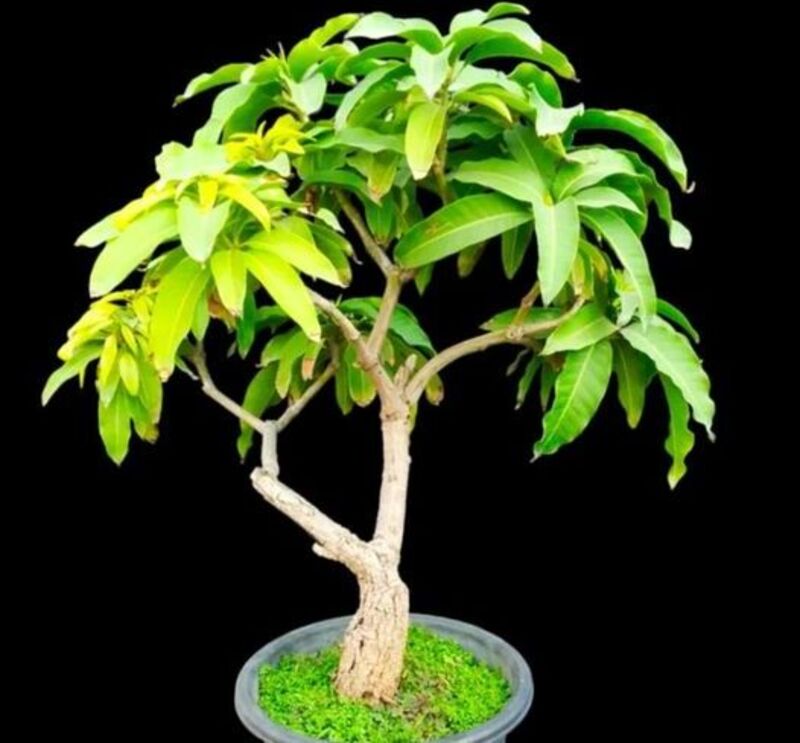
Bonsai Mango Tree Care Sheet
| Aspect | Care Tips |
|---|---|
| Watering | Check soil moisture regularly and water when the top inch of soil feels dry. |
| Water thoroughly until the pot empties, but don’t let the tree stay in water. | |
| Fertilizing | Use a balanced, water-soluble fertilizer formulated for bonsai or fruit trees. |
| Avoid overfertilization by following manufacturer’s dose and frequency directions. | |
| Pruning | Shape branches and clip new growth, dead or fading leaves. |
| Prune with care, following natural growth patterns and avoiding excessive pruning. | |
| Wiring | Use aluminum or copper wire to shape and position branches. |
| Be cautious not to apply too much pressure that may damage or break branches. | |
| Sunlight | Place in a location that receives 6-8 hours of direct sunlight per day. |
| Provide protection from harsh afternoon sun and cold drafts during winter. | |
| Repotting | Repot every 2-3 years in well-draining bonsai soil mix during spring. |
| Prune and trim roots while repotting, and position tree properly in the pot. | |
| Pest and Disease Control | Check for pests and diseases and apply pesticides or fungicides. |
| Keep leaves, branches, and soil clean to prevent pest and disease outbreaks. | |
| Winter Care | Move indoors to a well-lit, cool location during winter in areas with freezing temperatures. |
| Reduce watering and avoid fertilizing during the dormant period. | |
| Observation and Adjustment | Regularly monitor tree’s health, growth, and appearance. |
| Adjust watering, fertilizing, trimming, and other care as needed. |
By following this care sheet table and providing the necessary attention and care to your bonsai mango tree, you can ensure its health, beauty, and longevity as a cherished addition to your bonsai collection.
Conclusion:
Growing bonsai mango trees can be a rewarding and enjoyable experience for plant enthusiasts. With their unique and exotic appearance, compact size, and lower maintenance requirements, bonsai mango trees are a perfect addition to any home or garden. By selecting the right tree, providing proper care and maintenance, styling and designing, adapting to seasonal changes, and troubleshooting any issues, you can create a stunning and miniature version of the majestic mango tree. So, get started on your bonsai mango tree journey and enjoy the beauty and artistry of this captivating plant! Happy gardening!
FAQ:
Q: What is a bonsai mango tree?
A: A bonsai mango tree is a miniature mango tree that is trimmed, sculpted, and maintained in a small container to seem like a mature tree in nature, but on a much smaller scale.
Q: Can I grow a bonsai mango tree from a mango fruit seed?
A: While possible, it may not yield the desired results in terms of bonsai characteristics. It is recommended to start with a pre-bonsai or young mango tree sapling from a nursery or bonsai specialty store for better results.
Q: How often should I water my bonsai mango tree?
A: Watering frequency depends on factors such as tree size, climate, and pot size. As a general guideline, check soil moisture regularly and water when the top inch of soil feels dry. Water thoroughly but avoid letting the tree sit in standing water.
Q: How do I prune my bonsai mango tree?
A: Prune back new growth, dead or yellowing leaves, and shape branches using sharp pruning shears or scissors. Prune with care, following the natural growth patterns of the tree and avoiding excessive pruning.
Q: Can I wire my bonsai mango tree to shape its branches?
A: Yes, you can wire your bonsai mango tree using aluminum or copper wire, carefully wrapping it around branches to shape them. Regularly check for wire bite marks and adjust as needed.
Q: How should I care for my bonsai mango tree in winter?
A: Move your bonsai mango tree indoors to a well-lit, cool location during winter in freezing temperatures. Reduce watering and avoid fertilizing during the dormant period.
Q: How often should I repot my bonsai mango tree?
A: Repotting is typically done every 2-3 years in well-draining bonsai soil mix during spring. Prune and trim roots while repotting, and position the tree properly in the pot.
Q: How do I control pests and diseases on my bonsai mango tree?
A: Regularly inspect for pests or diseases and treat promptly with appropriate insecticides or fungicides. Keep leaves, branches, and soil clean to prevent pest and disease outbreaks.
Q: Why is observation and adjustment important for bonsai mango tree care?
A: Regularly monitoring the tree’s health, growth, and appearance allows for adjustments in watering, fertilizing, pruning, and other care practices as needed to ensure optimal health and beauty of the tree.
Also Read:

